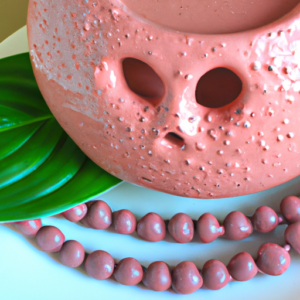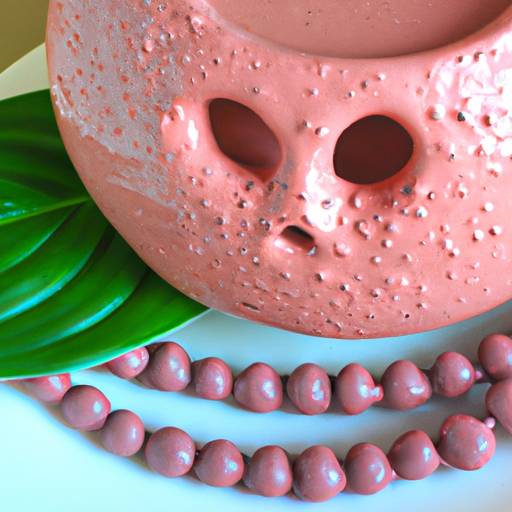Welcome to the Wonderful World of Exfoliation!
Hey there, beauty enthusiasts! If you’re anything like me, you’re always on the lookout for new ways to improve your skin. One of my personal favorites? Exfoliating! This magical process involves removing dead skin cells to reveal the fresh, glowing skin underneath. And let me tell you, the benefits are truly amazing.
If you’re interested in achieving brighter, clearer, more radiant skin, then keep on reading! In this article, we’ll explore everything you need to know about exfoliation, including its many benefits and the different types available. Plus, I’ll share some tips on how to incorporate exfoliation into your skincare routine for maximum impact.
But first, if you haven’t already, check out this awesome article on Achieving Clear, Glowing Skin: Tips and Tricks. It’s packed with expert advice that will help you get the most out of your skincare routine!
What’s So Great About Exfoliation Anyway?
Okay, let’s face it – sometimes we’re just too lazy to add another step to our skincare routine. But trust me, exfoliation is worth the effort! Here are just a few of the benefits:
Get Rid of Dead Skin Cells: Exfoliating removes the top layer of dead skin cells that can make your skin look dull and dry. This reveals the smoother, brighter skin underneath.

Unclogged Pores: Exfoliation can help unclog pores that can become clogged with oil and dirt. This can help reduce the appearance of blackheads and acne breakouts.
Stimulate New Skin Cells: Exfoliation stimulates cell turnover which increases collagen production and skin elasticity. This means fewer wrinkles and fine lines and healthier-looking skin overall.
Better Absorption: When you remove the top layer of dead skin cells, your skincare products can penetrate better. This means you get better results from your expensive serums and moisturizers.
So there you have it – exfoliation may seem like a small step, but it can make a big difference in your overall skin health. Give it a try and see the benefits for yourself!
Unleashing the Power of Different Types of Exfoliation
There are two main types of exfoliation – physical and chemical. Physical exfoliants work by physically scrubbing away dead skin cells, whereas chemical exfoliants use acids or enzymes to dissolve them. Physical exfoliants include scrubs, brushes, sponges, and loofahs. These exfoliants are great for targeting specific areas like elbows and feet, but they can be too abrasive for some skin types, causing irritation and microtears in the skin.
Chemical exfoliants, on the other hand, are gentler and more effective for most skin types. Alpha-hydroxy acids (AHAs) and beta-hydroxy acids (BHAs) are the most common types of chemical exfoliants. AHAs are water-soluble and work by loosening the bonds between dead skin cells, while BHAs are oil-soluble and penetrate deeper into the pores to unclog them. Both types of acids are effective at stimulating cell turnover and promoting a brighter, smoother complexion.
Enzyme exfoliants are another type of chemical exfoliant that is gaining popularity. These exfoliants use natural enzymes like papaya, pumpkin, and pineapple to dissolve dead skin cells. Enzyme exfoliants are gentle and great for sensitive skin types, but they may not be as effective as other types of exfoliants for people with thicker, oilier skin.
It’s important to note that all exfoliants have the potential to irritate the skin if overused, so it’s best to start with a gentler exfoliant and gradually work your way up to stronger formulas.
Step Up Your Skincare Game: How to Perfectly Incorporate Exfoliating into Your Routine
Hey, guys! Today, I’m going to share with you my expert tips on how to incorporate exfoliating into your skincare routine like a pro. Trust me, I’m a skincare addict, and I have tried and tested various exfoliating techniques. Here is how you can perfect them:
Step 1: Choose Your Exfoliant Wisely
The first step in incorporating exfoliating into your skincare routine is choosing the right exfoliant for your skin type. If you have sensitive skin, physical exfoliants can be too harsh and abrasive, and chemical exfoliants can also be too irritating. If you have oily or acne-prone skin, acid exfoliants work best. Try to avoid scrubs or exfoliants with large, chunky beads, which can be too rough and cause micro-tears in your skin. Personally, I love using a gentle enzyme exfoliant that dissolves the dead skin cells and does not cause any irritation.
Step 2: Exfoliate 1-2 Times Per Week
Frequency is another critical factor to consider. You don’t want to over-exfoliate and strip your skin of its natural oils, which can cause dryness and irritation. Exfoliating 1-2 times a week works best, depending on your skin’s sensitivity and condition. On the other days, use a gentle cleanser and toner that do not contain any exfoliating agents to avoid overstimulation.
Step 3: Apply Your Exfoliant Correctly
When applying your exfoliant, ensure that your skin is clean and dry. Gently massage the exfoliant into your skin in a circular motion, avoiding the delicate eye area. Be sure to follow the instructions on the packaging, and do not leave the exfoliant on your skin for longer than recommended. Afterward, rinse it off with warm water and pat your skin dry with a clean towel.
Step 4: Moisturize and Protect Your Skin
After exfoliating, your skin may be more sensitive, so it’s essential to apply a moisturizer to lock in hydration and protect your skin from environmental pollutants. Using a serum, facial oil, or cream that contains antioxidants or other skin-loving ingredients can also give your skin an extra boost of nourishment. Plus, never forget to apply sunscreen during the day to prevent further damage and premature aging.
There you have it! With these easy tips, you can perfectly incorporate exfoliating into your skincare routine. Remember, consistency is key, and listen to your skin’s needs. Happy exfoliating!
Wrap it up: My Final Thoughts on Exfoliation
Alright, folks, that’s a wrap on exfoliation! After researching and experimenting with different exfoliation methods, I can confidently say that exfoliation is a crucial step in any skincare routine. Not only does it help remove dead skin cells and unclog pores, but it also stimulates cell turnover and enhances product absorption.
When it comes to exfoliation, there are two main types: physical and chemical. Physical exfoliants use scrubs or brushes to physically remove dead skin cells, while chemical exfoliants use acids to dissolve the bonds between cells.
Incorporating exfoliation into my skincare routine was a game-changer for me. I now exfoliate once or twice a week, depending on my skin’s needs, and have noticed a significant improvement in the overall texture and appearance of my skin.
However, it’s important to keep in mind that not all exfoliants are created equal. It’s essential to choose the right type of exfoliant for your skin type and to be gentle when exfoliating to avoid damaging your skin.
Overall, exfoliation is a simple yet effective way to improve your skin’s health and appearance. I highly recommend adding it to your skincare routine if you haven’t already!
